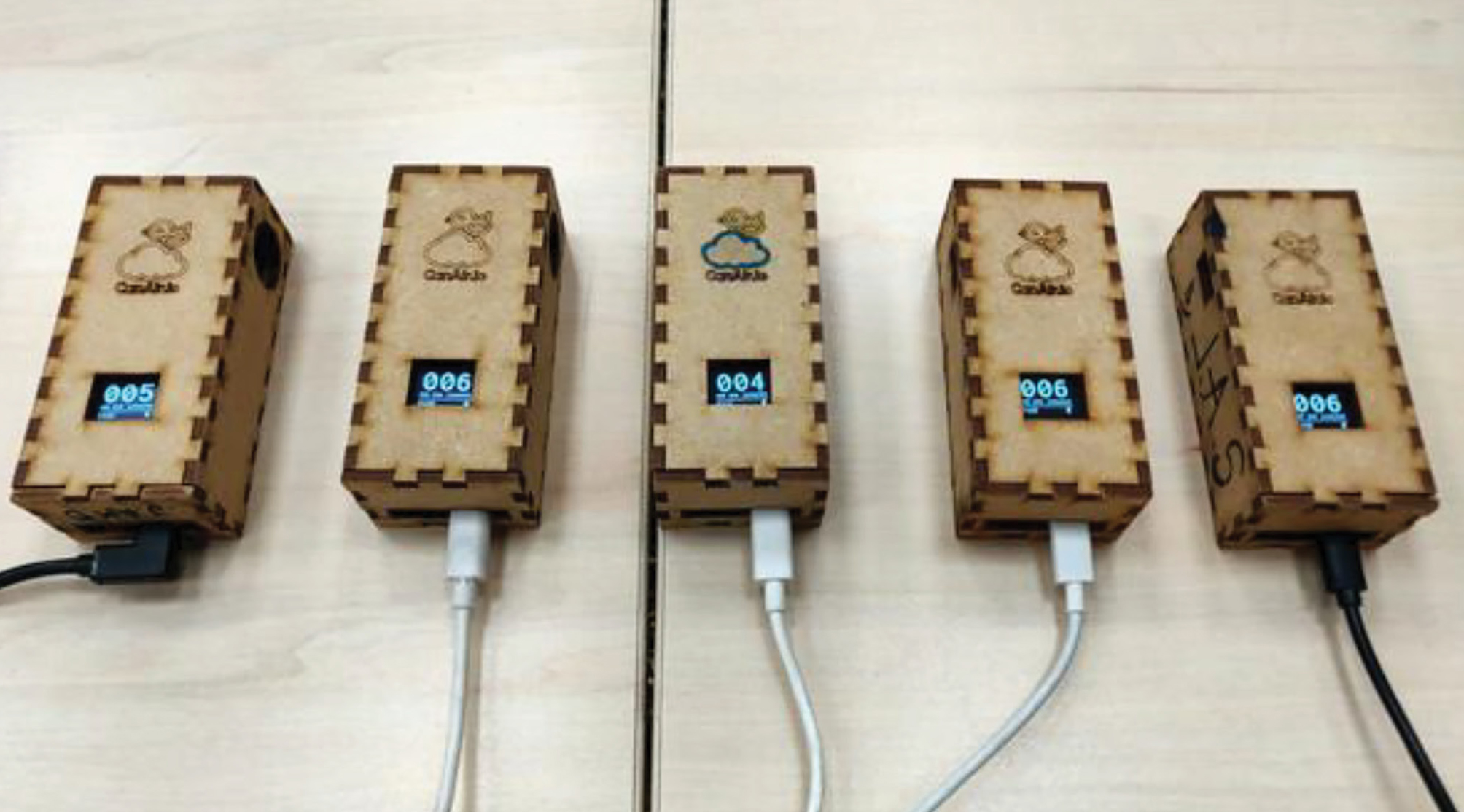citizen science
Getting a Sense of Local Air Quality
Science Scope—September/October 2022 (Volume 46, Issue 1)
By Jill Nugent
In the lowest layer of Earth’s dynamic atmosphere (the troposphere) resides the majority of air. Air is a mixture of naturally occurring gases coupled with air pollutants that can be solid, liquid, or gas. Particulate matter is a type of air pollution composed of small particles, liquid droplets, or aerosols. Particulate matter comes from human activity (such as automobile emissions, combustion of fossil fuels, burning trash, and cigarette smoking) and from natural sources (such as forest fires, volcanic eruptions, and dust storms). Air pollution can impact human health and Earth’s atmosphere. Because the air that surrounds us is transparent, we often take it for granted unless it is causing health issues such as breathing difficulties, including asthma. Even with efforts from the Clean Air Act and the Environmental Protection Agency (EPA), air pollution associated with human impacts is rising on a global scale.
A few years ago, concerned citizens in Bogota, Colombia started noticing an unpleasant smell in the air as they biked around their city. The smell was associated with diesel emissions from outdated public transit buses. They consulted the air quality report for the city, but noticed that the air quality seemed to be widely variable by location. They began taking air quality measurements around the city and found that the diesel-powered buses were associated with very poor air quality, roughly 10 times worse than air quality measurements in other parts of the city where the buses were not in operation.
Armed with this data, the CanAirIO Project was created. The project’s name comes from canario, the Spanish word for canary, a nod to the saying, “the canary in the coal mine.” Dating back to the early 20th century, miners placed caged canaries in coal mines to assess conditions. Canaries are small birds, sensitive to carbon monoxide and other gases that are harmful to humans. If a canary succumbed to the mine’s poor air quality, it served as a visual warning for the miners to evacuate the mine. The CanAirIO project puts a 21st-century variation on monitoring local air quality through the use of low-cost sensors to collect data (see Figure 1).

Students have the opportunity to create local air quality sensors with CanAirIO.
Project goal: To measure air quality using low-cost sensors
Your task: Collect local air quality data
Science discipline: Earth and Environmental Science
CanAirIO is growing into a global network of air quality monitors. The project data are used to validate and complement existing sources of air quality metrics. The CanAirIO sensor network is helping to improve the accuracy of air quality measurements at local levels.
Constructing the CanAirIO sensor takes roughly three hours to complete, and materials are estimated to cost $60 (see “Project home” and “Project link on SciStarter”). The CanAirIO team has created and shared resources to support students as they construct the sensor (see “Project resources,” ‘Sensor video overview,” and “Sensor tool overview”). The project provides a unique opportunity for science classrooms to partner with library/makerspace programs or engineering/computer science /STEM courses. Once students have created the sensors, they will be ready to go outside on school grounds to collect air quality data!
Materials you will need:
- Software and hardware material options to create your sensor (see “Project resources,” ‘Sensor video overview,” and “Sensor tool overview”)
- Cell phone (or Wi-Fi)
With the CanAirIO project, students will be able to generate local air quality reports and also review data submissions from other participants. Classroom and group discussions might explore topics such as: possible sources of air pollution in the local area, seasonal changes in air quality, or how air pollution impacts the temperature of the atmosphere.
Students can review the EPA’s Air Quality Index (AQI) and begin to brainstorm possible solutions to local air pollution. Additionally, students can host air quality report broadcasts for the school building; the student-led reports can include: (1) schoolyard locations tested, (2) recommended action for the day based on the data collected, and (3) ways that the school community can help to improve air quality in the local area. The CanAirIO project helps connect students to big ideas in science including Earth as a complex and dynamic system and our dependence on Earth processes. •
CanAirIO at a glance
When: Anytime
How: Students will construct air quality sensors to measure local airborne particulate matter.
Where: Global, anywhere on the planet
Time needed: Three hours
Special equipment needed: Yes. Students will construct and use a local air quality sensor (see “Project resources,” “Sensor video overview,” and “Sensor tool overview”).
Cost: Materials for the air quality sensor (cost roughly $60)
Contact for more information: info@canair.io
Safety: As with any science lab, classroom, or field activity, always ensure that you are following recommended safety practices; for more information on safety in the science classroom visit www.nsta.org/safety.
HELPFUL PROJECT LINKS
Project home—https://canair.io/
Project resources—https://bit.ly/3ScqrC7
Project link on SciStarter—https://bit.ly/3cHSqZK
Sensor video overview—https://bit.ly/3PzhzEK
Sensor tool overview—https://scistarter.org/canairio
Webinar with SciStarter and the CanAirIO Team—https://bit.ly/3Oyyd5S
Jill Nugent (jillfnugent@gmail.com) teaches science online, engages educators in citizen science experiences for the classroom, schoolyard, and beyond, and serves on the SciStarter Team. Follow SciStarter on Twitter: @SciStarter. This column is the result of a partnership between SciStarter and the National Science Teaching Association. For more information about SciStarter and other citizen science projects, please visit www.scistarter.org.
Citizen Science Climate Change Earth & Space Science Instructional Materials STEM Middle School


